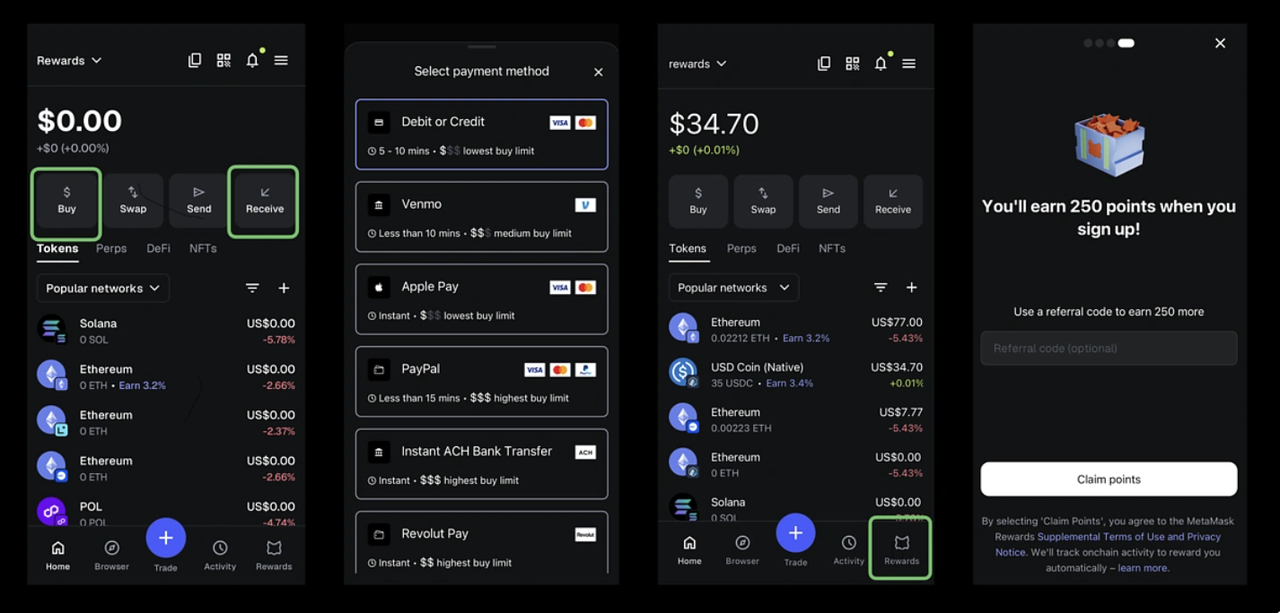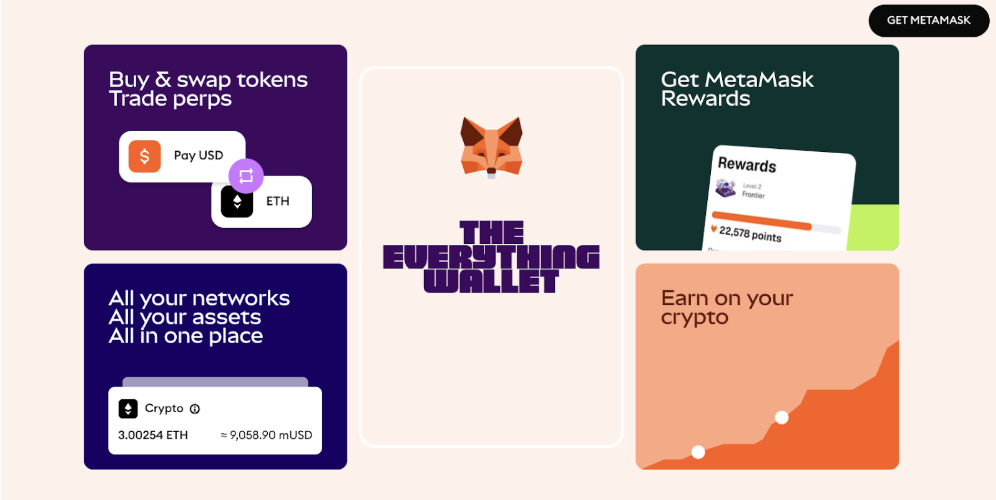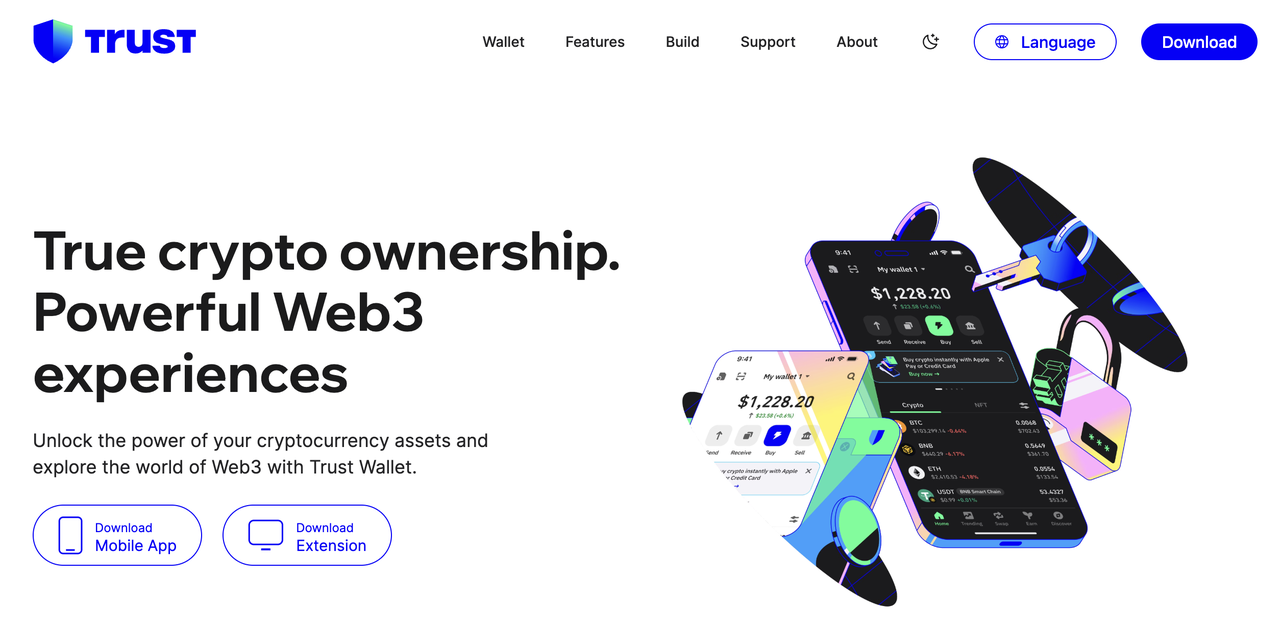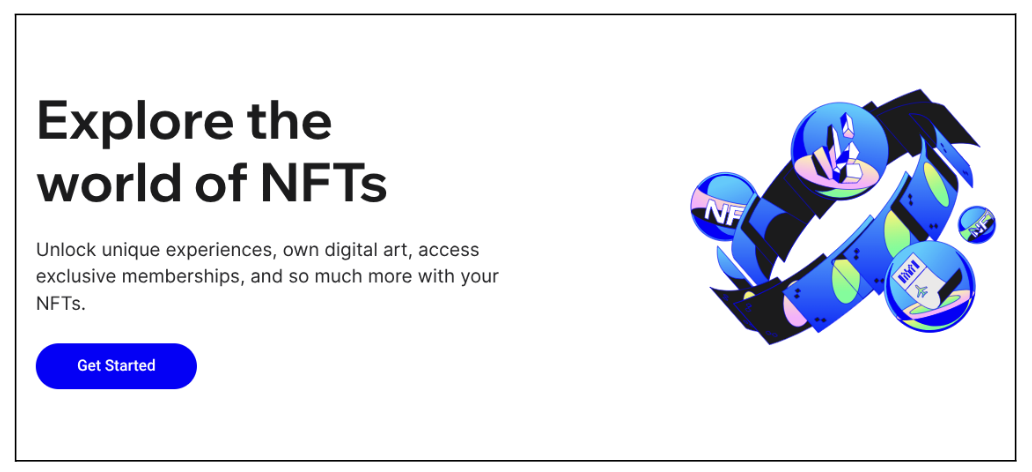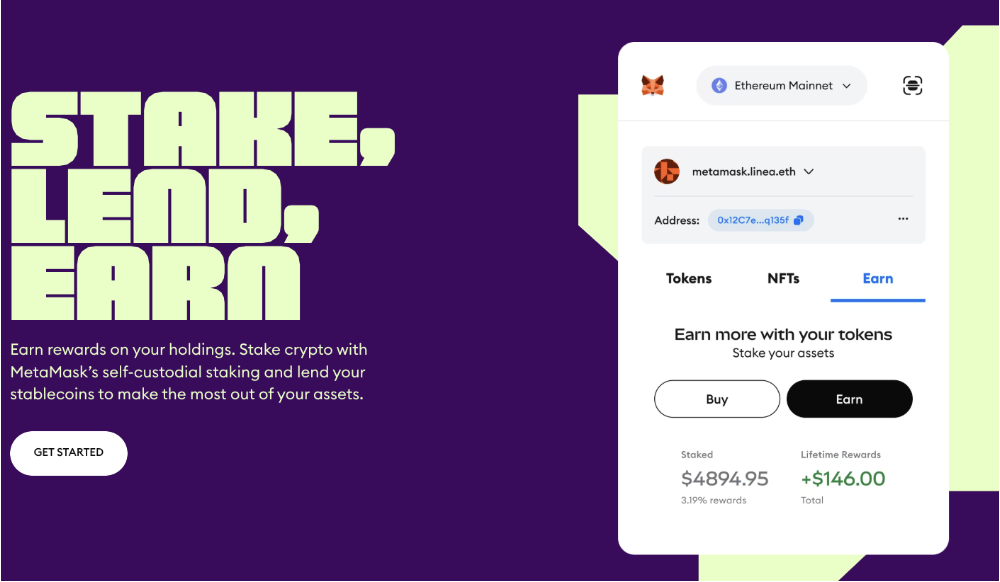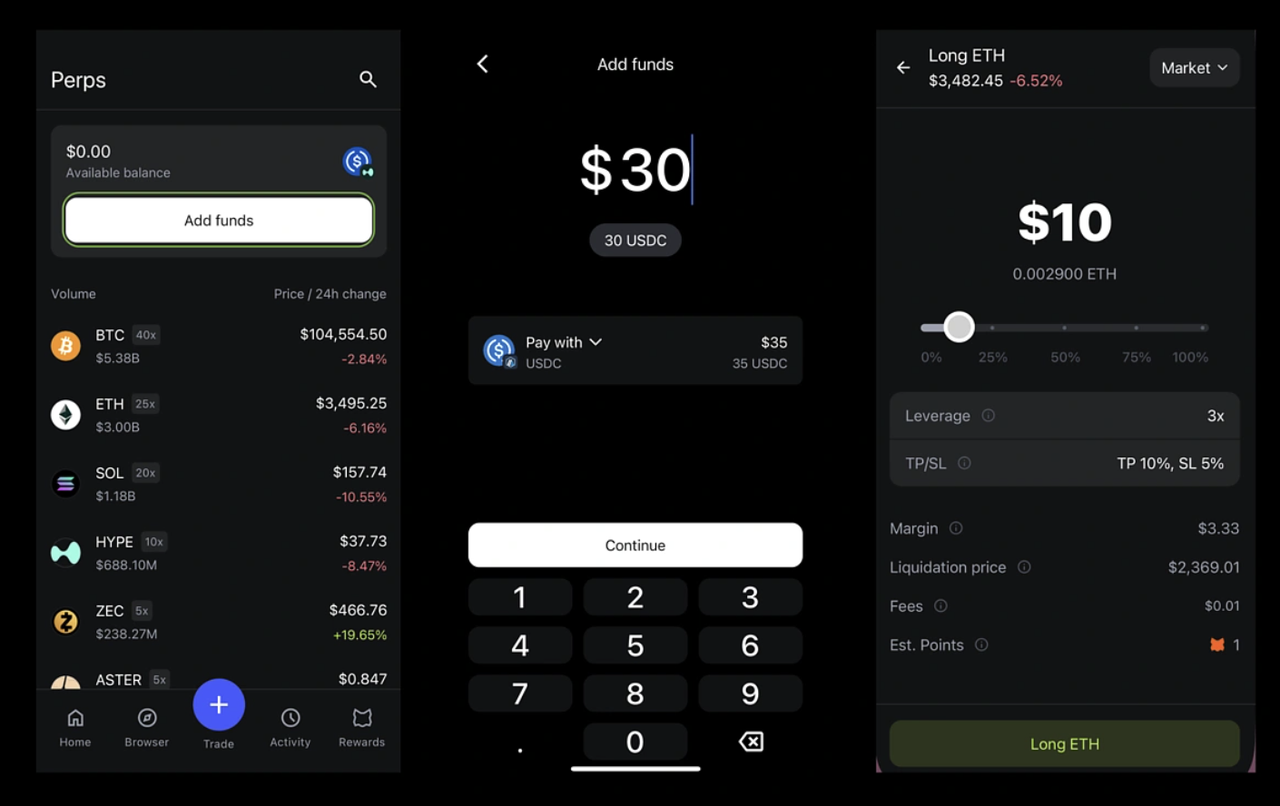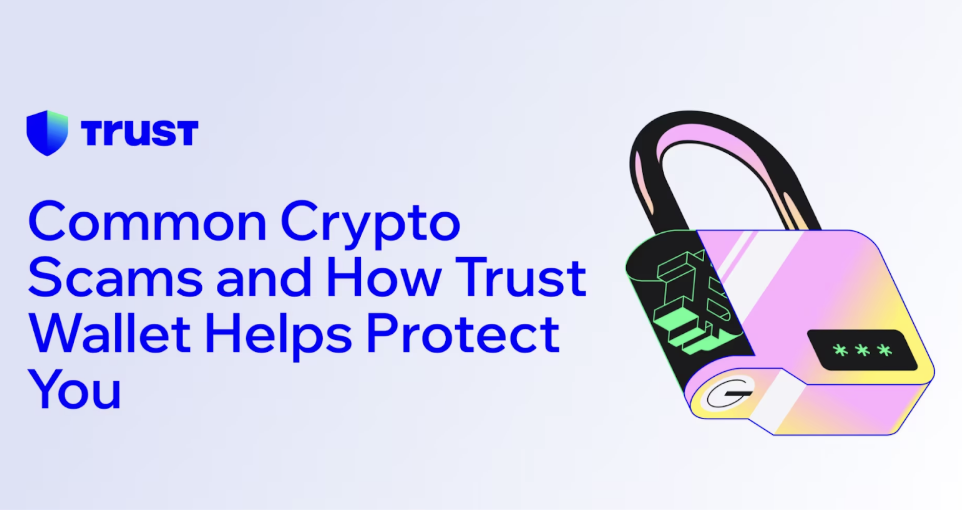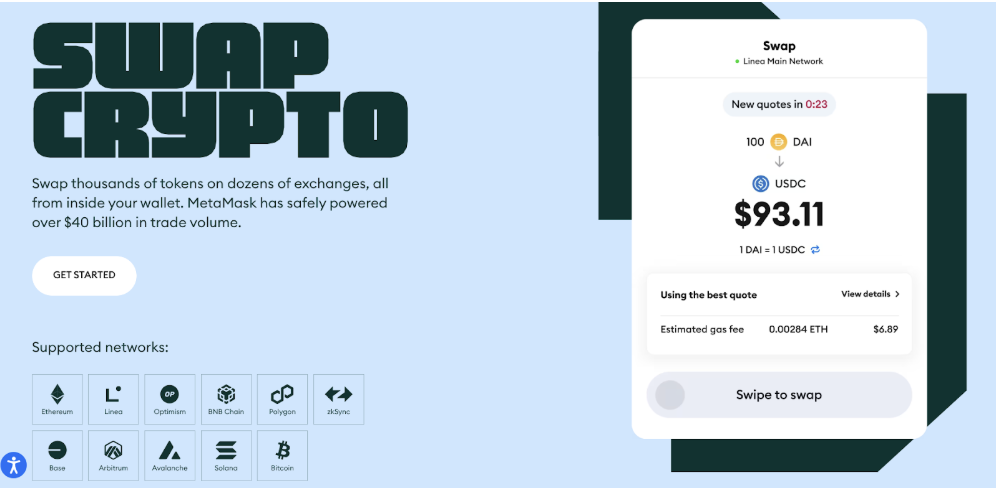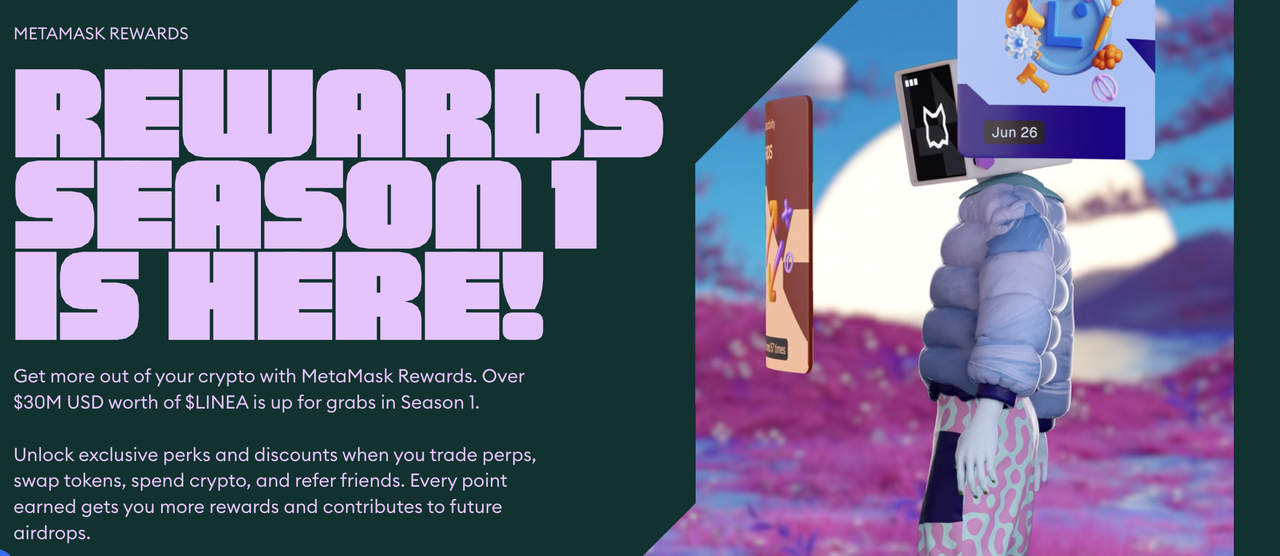MetaMask and
Trust Wallet are two of the most widely used
self-custody crypto wallets in the world, with a combined user base of more than 100 million individuals across mobile and browser platforms. As the crypto industry moves through late 2025, users are demanding stronger security, better staking tools, broader blockchain support, and more seamless access to decentralized applications.
Source: MetaMask via CoinGecko
Both wallets dominate the DeFi and Web3 ecosystem, but they operate with different philosophies, strengths, and technical foundations. This guide compares MetaMask and Trust Wallet across security, features, blockchain compatibility,
NFTs,
passive income tools, and upcoming events like the potential
MetaMask airdrop.
What Is MetaMask?
MetaMask is a
non-custodial wallet and Web3 gateway founded by Aaron Davis and developed under ConsenSys. It officially launched in July 2016 as a browser extension designed to help users interact with
Ethereum without running a full node. Since then, MetaMask has grown into the world's most-used Web3 wallet, surpassing 30 million monthly active users by late 2024. It enables users to store crypto, manage NFTs, sign smart contract transactions, connect to DApps, and access thousands of decentralized finance platforms on Ethereum and other EVM-compatible networks as well as non-EVM chains such as
Bitcoin and
Solana via Snaps.
MetaMask provides a built-in swap engine that aggregates liquidity from multiple decentralized exchanges to give users competitive rates. Its key strengths include powerful Web3 connectivity, broad DApp support, advanced custom RPC functionality, and a strong security foundation backed by ConsenSys, one of the largest blockchain developers in the world. MetaMask is especially popular among users interacting with NFT marketplaces, DeFi protocols, bridging platforms, and testnet environments.
What Is Trust Wallet?
Trust Wallet is a mobile-focused, self-custody wallet founded by Viktor Radchenko and launched in November 2017 before being acquired by Binance in 2018. With more than 60 million downloads worldwide, Trust Wallet is best known for supporting an extremely large number of cryptocurrencies and blockchains compared to nearly any other self-custodial wallet. It supports over 10 million crypto assets across more than 100 blockchains, including Bitcoin, Ethereum,
BNB Chain, Solana,
Cosmos,
Avalanche,
Tron,
Polygon, and many others. Designed for simplicity and mobile usability, it includes built-in staking, in-app swaps through several liquidity providers, NFT support across multiple networks, and direct Web3 browser access.
The wallet is especially popular among users who want broad asset diversity,
staking rewards from different chains, and a smooth interface without needing browser extensions or manual configuration. Trust Wallet excels in multi-chain compatibility, making it ideal for users holding diverse crypto assets outside the Ethereum ecosystem, and both its swap providers and Binance-backed liquidity allow cross-asset trading without leaving the app.
MetaMask vs. Trust Wallet: Key Similarities and Differences
1. Key Features of MetaMask and Trust Wallet
MetaMask operates as both a browser extension and mobile app, giving users seamless access to the Ethereum ecosystem and all EVM networks through custom RPC configuration, while Trust Wallet is a mobile-first crypto wallet that added its browser extension in 2023 and supports more than 100 blockchains natively with no manual network setup required.
MetaMask includes a built-in swap engine that routes trades across multiple
DEX aggregators and offers an institutional version tailored for professional teams, plus deep integration with
hardware wallets like
Ledger and
Trezor. Trust Wallet features a built-in DApp browser on mobile, native staking for over 20 different assets, token swaps, and Ledger hardware wallet support. In short, MetaMask prioritizes deep customization and desktop Web3 power, whereas Trust Wallet focuses on out-of-the-box multi-chain simplicity and mobile-first experience.
2. MetaMask vs. Trust Wallet for NFTs and DApps
MetaMask remains the most widely used NFT wallet on Ethereum and EVM chains, fully supporting ERC-721 and ERC-1155 assets with seamless integration to OpenSea,
Blur,
Rarible, Foundation, and thousands of NFT
DApps, while its
WalletConnect support and browser extension make desktop NFT trading smoother than any competitor.
Trust Wallet supports NFTs on Ethereum, BNB Chain, Polygon, Solana, and several other chains, offering broader multi-chain storage and a built-in Web3 browser for direct mobile access to marketplaces. For DApps in general, MetaMask is still the industry standard. More than 70% of Ethereum DApps are optimized for it, making it the default wallet for most Web3 applications, while Trust Wallet's DApp browser is highly convenient on mobile but less dominant on desktop environments.
3. MetaMask vs. Trust Wallet for Staking and Passive Income
MetaMask introduced staking through its institutional-grade MetaMask Staking platform and partnerships with Lido and Rocket Pool for Ethereum, plus support for Polygon,
Linea, and other EVM chains depending on protocol integrations, allowing users to earn yield while keeping non-custodial control.
Trust Wallet offers significantly broader native staking options thanks to its multi-chain design, letting users stake assets like
BNB,
ATOM,
SOL,
TRX,
DOT,
KAVA and many others directly in the app with yields typically ranging from 3% to over 20%, real-time reward tracking, estimated annual returns, and clear unbonding periods. Overall, MetaMask focuses on high-quality EVM-based staking, whereas Trust Wallet excels at accessible, high-yield multi-chain passive income.
4. Ease of Use
MetaMask is best suited for Ethereum and EVM-focused users who want complete control and customization over their networks; its interface is clean and intuitive, but users must manually add networks like BNB Chain, Polygon, and Avalanche, an extra step that can feel daunting for newcomers, though network switching and DApp connectivity become extremely smooth once configured. Trust Wallet was built with beginners in mind: it comes pre-loaded with major blockchains, automatically detects tokens and NFTs from multiple chains, and offers a dramatically simplified layout, making it feel instantly approachable even for someone who just installed their first crypto wallet.
5. Fees
MetaMask charges a swap fee ranging from 0.30% to 0.875% depending on routing complexity across liquidity sources, on top of standard blockchain gas fees that can be high on Ethereum mainnet. Trust Wallet adds no extra wallet fees whatsoever; users only pay for the gas required by the blockchain they're using, while swap fees vary by the third-party DEX provider.
6. Security
Both wallets are non-custodial and highly secure when used properly, but they approach protection differently. MetaMask uses industry-standard encryption, secure key storage, regular code audits backed by ConsenSys, full private-key control, and deep hardware wallet integration with Ledger and Trezor; in 2025 it rolled out enhanced phishing protection and transaction simulation warnings that are especially effective during DApp interactions.
Trust Wallet stores keys locally using secure enclave technology, has undergone third-party audits, offers biometric options and supports Ledger, giving it an excellent mobile-security track record. MetaMask generally edges out slightly for heavy DApp users thanks to its browser-based warnings and hardware-wallet flow.
7. Supported Blockchains and Native Token Swaps
MetaMask natively supports Ethereum, all Layer-2 solutions, and virtually every EVM-compatible chain like
Arbitrum,
Optimism,
Base, Polygon, BNB Smart Chain, Avalanche C-Chain, Linea,
zkSync, etc. via custom RPC or verified presets, plus growing non-EVM support through Snaps.
Trust Wallet natively supports over 100 blockchains out of the box, including Bitcoin, Solana, Cosmos ecosystem, Tron, and many others that require manual setup or third-party tools in MetaMask, making it the clear winner for anyone managing a truly diverse portfolio.
MetaMask or Trust Wallet: Which Wallet Is Better in 2025?
MetaMask is the superior choice if you live primarily in the Ethereum ecosystem, trade NFTs heavily on OpenSea or Blur, use Layer 2s daily, or need the deepest Web3 and developer tools, its browser extension and DApp integrations remain unmatched. Trust Wallet wins for anyone holding Bitcoin, Solana, Cosmos, Tron, or a wide mix of chains, wanting simple high-yield staking, or preferring an all-in-one mobile experience with zero configuration. Most power users actually run both, switching depending on the task.
How to Participate in the Upcoming MetaMask Rewards and Potential MASK Airdrop
MetaMask’s new Rewards Season 1 has intensified speculation about a future $MASK airdrop, especially after Consensys CEO Joseph Lubin confirmed a native token is coming. Users can boost potential eligibility by earning Reward Points through swaps, bridging to Linea, DApp activity, referrals, and consistent wallet usage. While nothing is officially confirmed, higher activity and point accumulation are widely expected to play a major role in any future airdrop allocation.
How to Fund Your MetaMask or Trust Wallet
Getting started with MetaMask or Trust Wallet is easy, and funding your wallet through BingX makes it even smoother. BingX allows you to buy popular cryptocurrencies like
ETH,
USDT, and
POL directly on its spot market, which you can then send to your MetaMask wallet to start using DeFi apps, trading NFTs, or exploring Web3.
Buy Ethereum on BingX spot market, powered by BingX AI's automated market analysis
Once you've purchased your crypto on BingX, you can send it to your MetaMask or Trust wallet in minutes. Just copy your MetaMask or Trust wallet address and paste it into BingX's withdrawal page. After confirming the transaction, your funds will appear in MetaMask or Trust Wallet, ready for use in the decentralized world.
BingX is a great choice because it offers low trading and transfer fees, deep liquidity for seamless transactions, and real-time prices on major tokens. With
BingX AI providing smart market insights, plus a beginner-friendly interface and advanced security, it's easy and safe to buy crypto and transfer funds to MetaMask.
With BingX, you're set up for a fast, secure, and affordable Web3 onboarding experience.
Other Ways to Add Funds to Your MetaMask or Trust Wallet
You can fund your MetaMask or Trust wallet not only by transferring crypto from centralized exchanges like BingX, but also by buying crypto directly within MetaMask using integrated providers or swapping tokens via
decentralized exchanges (DEXs) like
Uniswap. These options offer flexibility, but fees, slippage, and network conditions may vary.
Conclusion
MetaMask and Trust Wallet remain the two strongest self-custodial wallets in Web3. MetaMask owns the Ethereum and EVM landscape with unmatched DApp depth and desktop power, while Trust Wallet dominates multi-chain diversity, mobile usability, and beginner-friendliness.
Your ideal wallet depends entirely on your portfolio and habits: choose MetaMask for Ethereum-centric DeFi and NFTs, choose Trust Wallet for broad asset support and staking variety, or, like millions of advanced users, keep both installed and enjoy the best of every crypto wallet. Both wallets serve as a convenient entry point for both beginners and experienced users.
However, as with all crypto wallets, users should remain cautious. Always safeguard private keys, be aware of
phishing attempts, and understand the risks involved in interacting with decentralized applications.
Related Reading

